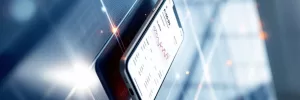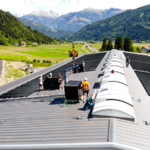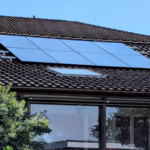Table of Contents
Monthly Energy Market Update: Preparing for Winter
Despite some major fluctuations in energy markets over recent months, two factors remain constant: ongoing supply risks and weak energy demand. The conflict in Ukraine and escalating tensions in the Middle East have increased geopolitical risks, impacting both Europe’s gas supply and the global coal market. This led to a surge in gas prices in early August, while electricity prices saw mixed trends. Western European electricity prices rose due to higher gas costs and lower hydropower availability, whereas Eastern European prices dropped due to the holiday season and cooler weather.
In the broader energy market, coal and CO₂ prices have remained around their long-term trends, while oil prices have fallen despite delayed OPEC production increases and unexpected supply outages. Weak demand across all energy sectors is a key reason for this drop and has helped ease concerns over supply shortages.
On the gas front, Europe’s LNG (liquefied natural gas) supply has slowed in recent months, raising concerns about winter gas levels. These fears intensified in September when Egypt, a former LNG exporter, offered 20 shipments for delivery over the next two months, tightening the global LNG market. However, strong pipeline flows from Norway and lower demand have helped stabilize Europe’s gas storage, which has reached 92.5% capacity. There are still uncertainties about future gas flows from Ukraine, as its transit agreement with Russia is set to expire later this year. The ongoing conflict in Ukraine also increases the likelihood that Eastern European markets will need to continue supporting Ukraine’s damaged energy system.
In the electricity sector, French nuclear production remains stable, with energy company EDF raising its annual production target. Early restarts, favorable weather, and better management of corrosion issues contributed to this. EDF also confirmed that the long-awaited Flamanville-3 reactor will come online this fall, expected to reach full capacity by year-end. Additionally, France’s grid operator RTE increased the electricity flow limit to Eastern Europe from 8 GW to 10 GW, prioritizing connections to Italy and Switzerland. This demonstrates the importance of interconnection, as shown by Finland’s EstLink-2 line, which resumed full capacity after a seven-month outage. This helped balance capacity limitations with Sweden, offsetting the temporary shutdown of Finland’s Olkiluoto-2 nuclear reactor due to turbine issues.
Looking ahead to September and October, several risks remain for gas supply, including significant production cuts in Norway and Algeria due to planned maintenance and expected storm activity in the Atlantic that could disrupt U.S. LNG facilities. However, weaker LNG demand in Asia increases the likelihood that extra shipments will be redirected to Europe. The ongoing weak demand in Europe remains a major concern, with the European Commission releasing a report from Mario Draghi urging measures to boost Europe’s competitiveness. This comes as Volkswagen considers closing two of its German factories, which could further dampen electricity demand in Germany.

Central Association for Plumbing, Heating, and Climate Control Joins Agreement for Safe Installation of Photovoltaic Systems
The plumbing, heating, and climate control industry is committing to improved workplace safety by offering training for the safe installation of photovoltaic systems, according to the Central Association for Plumbing, Heating, and Climate Control (ZVSHK). The industry is responding to changes in the market, where installing climate-friendly heating systems, such as heat pumps, often goes hand in hand with setting up photovoltaic or solar thermal systems.
Earlier this year in March, the Central Association of German Electrical and Information Technology Trades (ZVEH), the Central Association of the German Roofing Trade (ZVDH), and two occupational safety organizations (BG ETEM and BG BAU) signed an agreement to ensure safe installation practices for photovoltaic systems. This agreement focuses on cross-trade safety measures, and now the plumbing, heating, and climate control industry has joined in.
The agreement includes guidelines on protective equipment and work procedures, such as when scaffolding should be used. It also provides a template contract for subcontracting electrical work, for example, when connecting a photovoltaic system installed by a heating company to the power grid.
“Photovoltaic systems are usually installed in high places, like rooftops, where serious fall accidents often occur. Additionally, the panels start generating electricity as soon as sunlight hits them, posing a risk of electric shock if handled improperly,” explained Jörg Botti, General Manager of BG ETEM. “It’s crucial that installers are knowledgeable and follow safety protocols.”
The plumbing industry association has pledged to offer its members training programs focused on electrical work related to photovoltaic modules.

Agrivoltaics Delays Harvest and Improves Wine Quality
Wine producer Svolta Srl has installed a photovoltaic system in its Vigna Agrivoltaica di Comunità vineyard in Laterza, located in the Italian province of Taranto, in the sunny region of Apulia. The 970 kW plant, facing south, includes approximately 7,770 panels with different production capacities – 135 Wc, 125 Wc, and 100 Wc. The technology used is a thin-film dual-junction system, though the specific type isn’t disclosed. The modules are mounted at a 28-degree angle on a structure that mimics traditional pergola-style vineyard designs using reinforced concrete elements for viticulture. The company grows two grape varieties: the local Primitivo and Goldtraminer, a variety native to the Dolomites in northern Italy, typically incompatible with the lower latitudes of the Apulia region.
The company noted that the photovoltaic system delayed the harvest compared to other vineyards in the area. Technical studies show that the system reduces exposure to extreme weather conditions, minimizes environmental impact, reduces water consumption by up to 20%, and increases land yield by 20 to 60%.
Emilio Roggero, from the Italian Association of Sustainable Agrivoltaics (AIAS), added that the system helped the winemaker reverse a trend where hotter summers had shifted the harvest from early October to late September. “The agrivoltaic park allowed us to delay the harvest, reduce water stress, and protect the grapes from other extreme weather conditions,” he told pv magazine Italia. “We have multi-year measurements of reduced water stress in the vines under agrivoltaic shade conducted by Professor Maurizio Boselli from the University of Verona, based on research from 2009 to 2013 in Valpolicella. Even at the most critical times, around noon, the leaves of the plants under the panels are in almost normal conditions, while those outside, exposed to full sun, experience intense water stress.” Professors Giuseppe Ferrara and Andrea Mazzeo, from the University of Bari, confirmed these findings with additional measurements. Roggero mentioned that while the harvest in 2022 took place at the beginning of October, in 2024, it occurred three to four weeks later than in neighboring regions, for both grape varieties.
According to researchers, Primitivo grapes grown under the panels achieved good sugar levels while maintaining acidity, unlike sun-exposed grapes, which had high sugar levels and low acidity with elevated pH. “Partial shading slows the increase in sugar content, and this year, the desired value of 21 degrees was reached in the last days of August, while sun-exposed grapes at the same time had already reached 25 degrees, well beyond our target,” added Roggero. “We detected about a 10% reduction in sugar content and about a 25% increase in acidity in the grapes under agrivoltaic shading. Ongoing tests on different acidities are being conducted with the University of Bari, and the data is being processed.”
Grapes with ideal sugar and acidity levels enable the production of high-quality wines without the need for corrective oenological interventions, preserving the wine’s authenticity. “This year, we produced a new Traminer, which is still being processed, with a good balance between sugar and alcohol content – 14% vol – and acidity at pH 3.45. The results are positive and surprising,” Roggero concluded. “The same Primitivo di Gioia del Colle grown using agrivoltaics shows elegance and a good level of acidity, reminiscent of the great red wines from the north.”

Significant Decline in Photovoltaic Installations Under 30 Kilowatts
According to current registration data, the expansion of photovoltaic installations up to 30 kilowatts decreased by nearly 30% in August compared to July, based on the number of systems registered by the 16th of the following month and excluding plug-in solar systems. This sharp decline now clearly highlights the effect that installers and wholesalers have been warning about for months: a significant drop in order numbers. When analyzing the expansion figures up to and including June, this effect was not yet visible, which led to a lively debate among our readers.
Generally, it is uncertain to evaluate the expansion figures of a month by the 16th of the following month, as not all operators have registered their newly commissioned systems with the Federal Network Agency by that time. However, if we compare month-to-month developments based on the data for systems registered by the 16th of the respective following month, the uncertainty in the past has, with three exceptions, never exceeded four percentage points or 30% relative, and these exceptions are explainable. Therefore, the significant decline in August is fairly certain, affecting all segments except for plug-in solar systems.
In the segment up to ten kilowatts, this is not just a monthly fluctuation. Even when comparing the expansion from January 2024 to August 2024 with that of the previous year, and considering only the systems registered by the 16th of September of each year, the trend is clear. In the segment up to 30 kilowatts without plug-in solar systems, the installed capacity fell by 10%. A more detailed analysis shows that the entire decline is attributed to systems up to ten kilowatts, where there was a 30% decrease compared to 2023.
The market for installation companies is becoming more challenging. While it does not seem to affect all businesses, the deterioration is no longer just an individual perception but a serious challenge for many.
Kai Lippert, managing director of wholesaler EWS, shares this view in the upcoming pv magazine issue, set to be released on September 23rd. He also notes that policymakers need to consider whether the signals they are sending are appropriate. Installation companies have built up capacities, and it makes sense to maintain these, especially given the targeted expansion path. Even though last year’s expansion of 15.1 gigawatts significantly exceeded the 13 gigawatts targeted for this year (2024), Lippert warns, “Companies that go bankrupt won’t come back.”

Bundesnetzagentur: New Photovoltaic Systems Must Be Controllable
The rapid expansion of photovoltaic (PV) systems in Germany is leading to increased cannibalization of solar power on the electricity market. By the end of July, the record of 301 negative hours at the electricity exchange from the previous year had already been surpassed, and more hours are expected. This is due to the high, simultaneous feed-in from PV systems during spring and summer months. The oversupply, especially when paired with weak demand, drives prices down.
Klaus Müller, President of the Federal Network Agency, is also concerned about grid stability. While the massive expansion of PV is welcome, the local grid infrastructure must keep pace, he said in an interview with the Neue Osnabrücker Zeitung (Saturday edition). “And feed-in should, in the future, be oriented toward market prices and, therefore, demand. The flexibility we want from industry, we also want to require from renewable energy producers,” he added. Müller is referring to plans that ask industrial companies to adjust their production and electricity consumption more closely to the availability of renewable energy.
“There is no way around making new solar systems controllable. They must react to the market, meaning stop feeding in when there is no one willing to pay for the electricity. Additionally, distribution network operators must be empowered to control solar systems during critical grid situations to maintain grid stability,” Müller further stated in the interview. He is calling for the Bundestag to pass the necessary legislative changes by this fall.
The German government’s “Growth Initiative” includes plans to bring forward the so-called one-hour rule to next year. According to current EEG (Renewable Energy Sources Act) plans, PV systems in mandatory direct marketing will no longer receive remuneration starting in 2027 from the first hour of negative electricity prices. A gradual reduction is planned, with the rule currently applying after three consecutive hours.
Müller emphasizes that his goal is not to slow down the expansion of PV. “However, we must maximize technical possibilities. For example, when solar systems are supplemented with storage, excess electricity can be stored instead of being curtailed. We need to better align the interests of investors and the system than we have done so far,” he concluded.

Since 2008, Maysun Solar has been dedicated to producing high-quality photovoltaic modules. Our range of solar panels, including IBC, HJT, TOPCon panels, and balcony solar stations, are manufactured using advanced technology and offer excellent performance and guaranteed quality. Maysun Solar has successfully established offices and warehouses in many countries and built long-term partnerships with top installers! For the latest quotes on solar panels or any photovoltaic-related inquiries, please contact us. We are committed to serving you, and our products provide reliable assurance.
Reference:
Willuhn, M. (2024, September 13). Zentralverband Sanitär Heizung Klima tritt der Vereinbarung für sichere Installation von Photovoltaik-Anlagen bei. Pv Magazine Deutschland. https://www.pv-magazine.de/2024/09/13/zentralverband-sanitaer-heizung-klima-tritt-der-vereinbarung-fuer-sichere-installation-von-photovoltaik-anlagen-bei/
Monatliches Energiemarkt-Update: Vorbereitung auf die Wintersaison. (2024, September 17). Pv Magazine Deutschland. https://www.pv-magazine.de/2024/09/17/monatliches-energiemarkt-update-vorbereitung-auf-die-wintersaison/
Matalucci, S. (2024, September 19). L’agrivoltaïsme retarde les vendanges et améliore la qualité du vin. Pv Magazine France. https://www.pv-magazine.fr/2024/09/19/lagrivoltaisme-retarde-les-vendanges-et-ameliore-la-qualite-du-vin/
Fuhs, M. (2024, September 17). Zubau bei Photovoltaik-Anlagen unter 30 Kilowatt geht deutlich zurück. Pv Magazine Deutschland. https://www.pv-magazine.de/2024/09/17/zubau-bei-photovoltaikanlagen-unter-30-kilowatt-geht-deutlich-zurueck/
Enkhardt, S. (2024, September 2). Bundesnetzagentur: Neue Photovoltaik-Anlagen müssen steuerbar sein. Pv Magazine Deutschland. https://www.pv-magazine.de/2024/09/02/bundesnetzagentur-neue-photovoltaik-anlagen-muessen-steuerbar-sein/
Recommend Reading:

Empowering Factories with Solar Energy A Strategic Tool for Controlling Production Electricity Costs
Commercial and industrial solar is becoming a key solution for factories to reduce electricity costs and hedge against price fluctuations. This article systematically analyzes its deployment models, cost advantages, and sustainable value pathways.

How Businesses Can Offset Carbon Taxes with Solar Power
This article analyzes the latest carbon tax policies and photovoltaic deduction strategies, helping European businesses legally reduce taxes, increase profits through solar investment, and achieve a win-win situation for both economy and environment.

Forecast and Response: Seizing the Next Decade’s Growth Dividend in Europe’s Commercial and Industrial Photovoltaics Market
Maysun Solar analyzes the growth trends of commercial and industrial photovoltaics in Europe over the next ten years, from policies and ESG to technological innovation, helping companies seize the initiative in the energy transition.

How to Calculate Solar System ROI and Optimize Long-Term Returns?
Solar power is becoming a key solution for businesses to reduce costs and improve efficiency. Accurately calculating ROI and optimizing long-term returns are essential to maximizing investment value.

Will Agrivoltaics Affect Crop Growth?
Agrivoltaics combines solar energy and agriculture to reduce up to 700 tons of CO₂ per MW, improve water use, and boost crop growth for sustainable farming.

6.5 Billion Loss Hits Photovoltaics: Reshaping or Elimination?
In 2025, the photovoltaic market may see a turnaround as some companies take early action. A €6.5 billion loss is driving businesses to explore new growth areas like energy storage and hydrogen. Which giants will break through? Industry transformation is accelerating!



